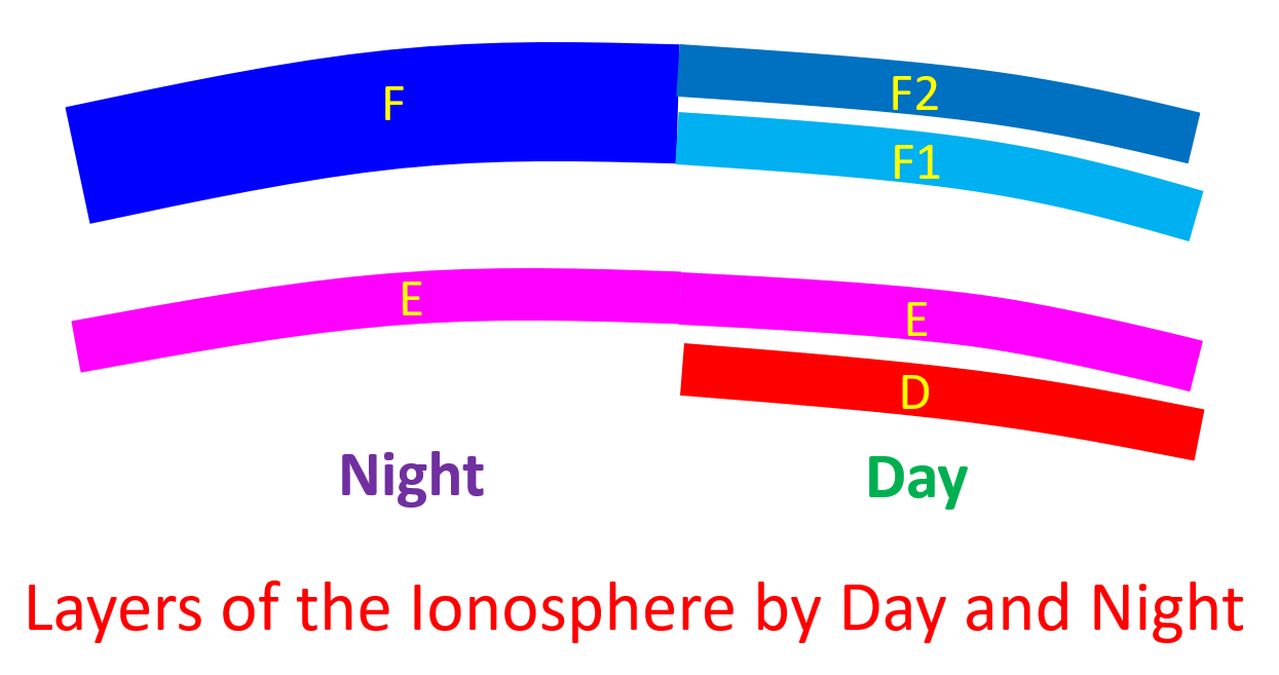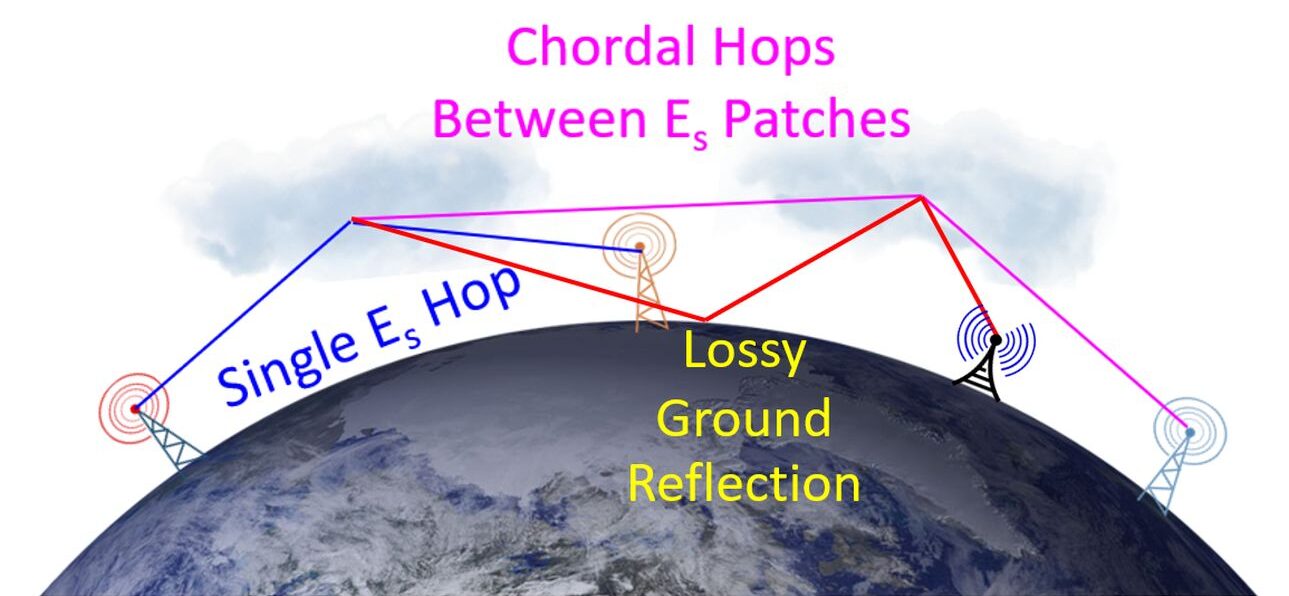What is Sporadic E Propagation?
What is Sporadic E Propagation?
Sporadic E, known in short as Es, is an unusual form of radio propagation at VHF range using the E layer of the ionosphere. Normally only F layer of the ionosphere refracts radio waves, usually those in the HF range, allowing long distance radio communication. Sporadic E propagation occurs when small regions in E layer at 95 to 150 km reflects radio signals. This typically occurs from 3 weeks before to 3 weeks after the summer solistice, on VHF bands, which normally allows only line of sight propagation. This would be from early June to mid July in the Northern hemisphere. Sporadic E progation is especially sought after by radio amateurs working on 6 m band for long distance communications.

Ionosphere containing ionized gas particles, is located mainly in the thermosphere layer of the atmosphere, though it can extend inwards to the mesosphere and outwards to the exosphere. The lower most layers of the atmosphere below the mesosphere are known as stratosphere and troposphere from above downwards. Ionosphere can extend from 60 to 300 km above the earth’s surface. Three layers are F region, E layer and D layer. During daytime, F layer splits into F1 and F2 layers due to increased ionization. The two layers of F region merge together at night.

Existence of E layer was demonstrated by Marconi in 1901 when signals were shown to bounce off an electrically conducting layer at about 100 km altitude, during transmission between Europe and North America. It was Sir Edward Appleton in 1927 who named it the E layer, meaning electrical layer. Later additional conducting layers were discovered and named D layer inner to E layer and F layer outer to E layer. D layer disappears at night.
Sporadic E propagation occurs in the frequency range of 25 to 150 MHz which would include amateur radio bands of 2 m, 6 m and 10 m. Communication may occur by a single hop along an Es patch or by multiple hops. Hops can occur from the ground back to the next Es patch in which case the signal loss is more as the second hop is from the earth which is lossy. One or more chordal hops can occur between the patches before the signal reaches the ground receiver. In that case, signal loss is lesser because lossy reflection from earth is not involved. Distance covered by hop from a single Es patch can range from 800 to 2,200 km. Multiple chordal hops can take the signal from 2,200 to 15,000 km.
